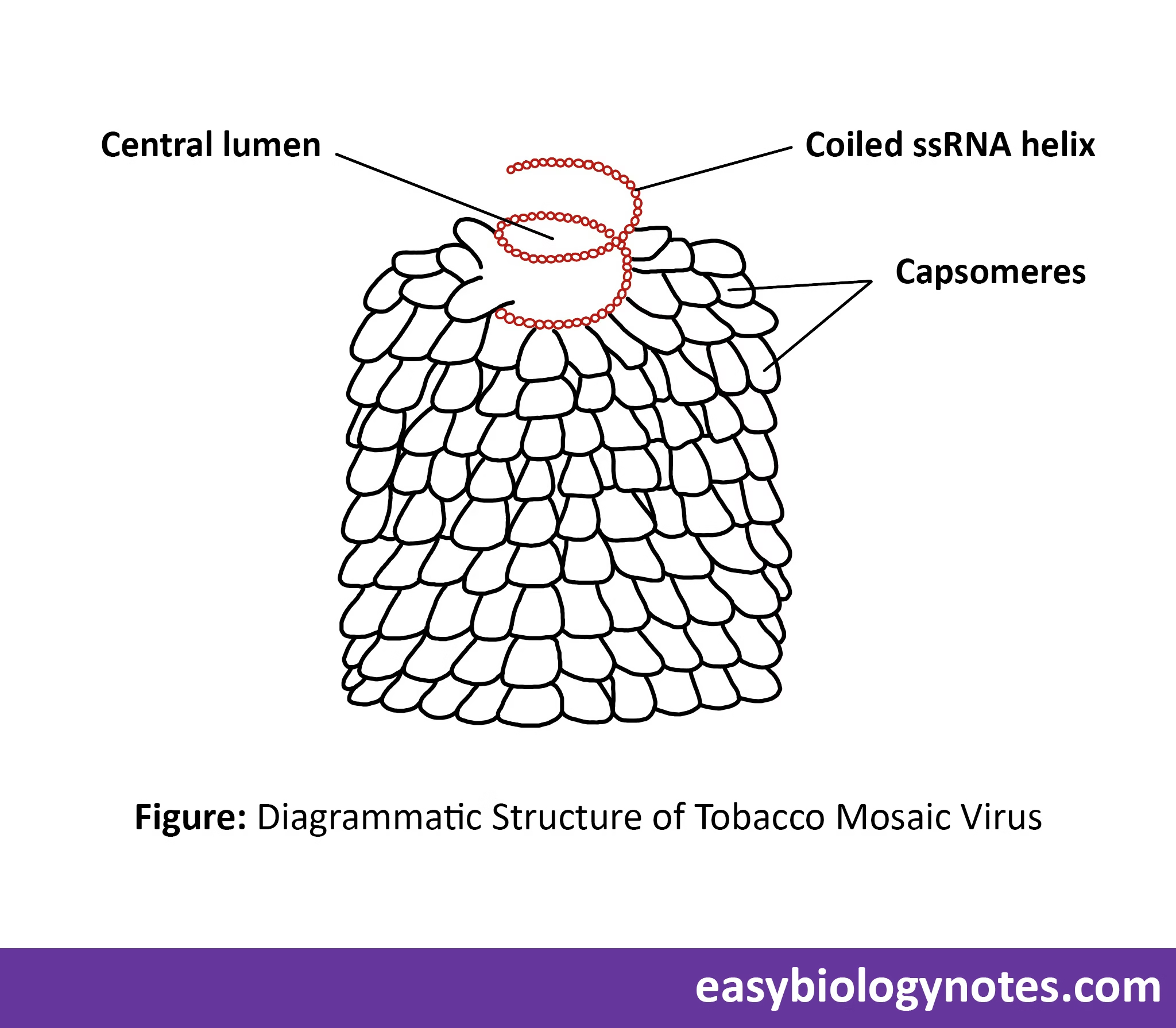What is Tobacco Mosiac Virus (TMV)?
- Tobacco Mosaic Virus (TMV) is a plant virus that mainly infects tobacco plants but can also affect other crops, including tomatoes and peppers.
- It is a rod-shaped virus, one of the first ever discovered and studied.
History and Discovery of TMV
- TMV was identified in the late 19th century when scientists noticed a “mosaic” pattern on the leaves of infected tobacco plants.
- It was first discovered by Dmitri Ivanovsky.
- In 1935, Wendell Stanley crystallized the virus, earning a Nobel Prize and marking TMV as the first virus to be purified and studied structurally.
- Scientific name of this virus is Protovirus tobaci (Given by A. Lowff and P. Tournier in 1966)
Structure of Tobacco Mosaic Virus
- TMV consists of a single strand of RNA wrapped in a protective coat of protein subunits.
- Its helical structure makes it highly stable and resilient, even under harsh environmental conditions.

Symptoms in Plants
- Infected plants show distinct patterns, such as typical yellow and green mottling on leaves, stunted growth, and distorted leaves.
- It also causes download curling and distortion of young apical leaves.
- These symptoms can significantly reduce crop yield and quality.
Mode of Transmission
- TMV is highly contagious.
- TMV spreads primarily through mechanical means, such as human handling, contaminated tools, or contact between infected and healthy plants.
- Many aphids are the vectors of this virus.
- Unlike some viruses, TMV doesn’t rely on insects or other vectors for transmission.
Impact on Agriculture
- TMV can cause considerable economic losses, especially in crops like tobacco and tomatoes, by affecting yield and market quality.
- Its ability to persist on surfaces and in plant debris makes it challenging to manage.
Management Strategies
- Cultural Practices: Regular cleaning of tools, crop rotation, and removal of infected plant material can help reduce the spread.
- Resistant Varieties: Breeding plants resistant to TMV has proven to be an effective long-term solution.
- Good Hygiene: Washing hands and disinfecting surfaces after handling infected plants is crucial.
Scientific Importance
- TMV played a pivotal role in virology, helping scientists understand viruses’ structure and function.
- It’s used in biotechnology, such as in nanotechnology and the development of plant-based vaccines.
*TMV’s ability to withstand extreme conditions has made it a model organism for studying viral stability and adaptation.